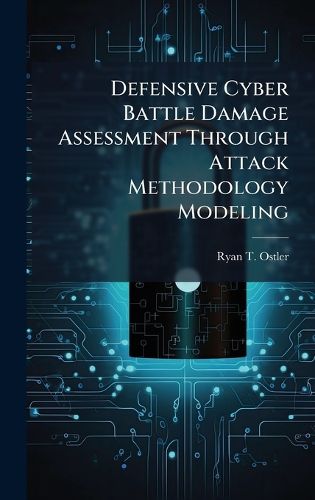Readings Newsletter
Become a Readings Member to make your shopping experience even easier.
Sign in or sign up for free!
You’re not far away from qualifying for FREE standard shipping within Australia
You’ve qualified for FREE standard shipping within Australia
The cart is loading…






This title is printed to order. This book may have been self-published. If so, we cannot guarantee the quality of the content. In the main most books will have gone through the editing process however some may not. We therefore suggest that you be aware of this before ordering this book. If in doubt check either the author or publisher’s details as we are unable to accept any returns unless they are faulty. Please contact us if you have any questions.
Due to the growing sophisticated capabilities of advanced persistent cyber threats, it is necessary to understand and accurately assess cyber attack damage to digital assets. This thesis proposes a Defensive Cyber Battle Damage Assessment (DCBDA) process which utilizes the comprehensive understanding of all possible cyber attack methodologies captured in a Cyber Attack Methodology Exhaustive List (CAMEL). This research proposes CAMEL to provide detailed knowledge of cyber attack actions, methods, capabilities, forensic evidence and evidence collection methods. This product is modeled as an attack tree called the Cyber Attack Methodology Attack Tree (CAMAT). The proposed DCBDA process uses CAMAT to analyze potential attack scenarios used by an attacker. These scenarios are utilized to identify the associated digital forensic methods in CAMEL to correctly collect and analyze the damage from a cyber attack. The results from the experimentation of the proposed DCBDA process show the process can be successfully applied to cyber attack scenarios to correctly assess the extent, method and damage caused by a cyber attack.
This work has been selected by scholars as being culturally important, and is part of the knowledge base of civilization as we know it. This work was reproduced from the original artifact, and remains as true to the original work as possible. Therefore, you will see the original copyright references, library stamps (as most of these works have been housed in our most important libraries around the world), and other notations in the work.
This work is in the public domain in the United States of America, and possibly other nations. Within the United States, you may freely copy and distribute this work, as no entity (individual or corporate) has a copyright on the body of the work.
As a reproduction of a historical artifact, this work may contain missing or blurred pages, poor pictures, errant marks, etc. Scholars believe, and we concur, that this work is important enough to be preserved, reproduced, and made generally available to the public. We appreciate your support of the preservation process, and thank you for being an important part of keeping this knowledge alive and relevant.
$9.00 standard shipping within Australia
FREE standard shipping within Australia for orders over $100.00
Express & International shipping calculated at checkout
Stock availability can be subject to change without notice. We recommend calling the shop or contacting our online team to check availability of low stock items. Please see our Shopping Online page for more details.
This title is printed to order. This book may have been self-published. If so, we cannot guarantee the quality of the content. In the main most books will have gone through the editing process however some may not. We therefore suggest that you be aware of this before ordering this book. If in doubt check either the author or publisher’s details as we are unable to accept any returns unless they are faulty. Please contact us if you have any questions.
Due to the growing sophisticated capabilities of advanced persistent cyber threats, it is necessary to understand and accurately assess cyber attack damage to digital assets. This thesis proposes a Defensive Cyber Battle Damage Assessment (DCBDA) process which utilizes the comprehensive understanding of all possible cyber attack methodologies captured in a Cyber Attack Methodology Exhaustive List (CAMEL). This research proposes CAMEL to provide detailed knowledge of cyber attack actions, methods, capabilities, forensic evidence and evidence collection methods. This product is modeled as an attack tree called the Cyber Attack Methodology Attack Tree (CAMAT). The proposed DCBDA process uses CAMAT to analyze potential attack scenarios used by an attacker. These scenarios are utilized to identify the associated digital forensic methods in CAMEL to correctly collect and analyze the damage from a cyber attack. The results from the experimentation of the proposed DCBDA process show the process can be successfully applied to cyber attack scenarios to correctly assess the extent, method and damage caused by a cyber attack.
This work has been selected by scholars as being culturally important, and is part of the knowledge base of civilization as we know it. This work was reproduced from the original artifact, and remains as true to the original work as possible. Therefore, you will see the original copyright references, library stamps (as most of these works have been housed in our most important libraries around the world), and other notations in the work.
This work is in the public domain in the United States of America, and possibly other nations. Within the United States, you may freely copy and distribute this work, as no entity (individual or corporate) has a copyright on the body of the work.
As a reproduction of a historical artifact, this work may contain missing or blurred pages, poor pictures, errant marks, etc. Scholars believe, and we concur, that this work is important enough to be preserved, reproduced, and made generally available to the public. We appreciate your support of the preservation process, and thank you for being an important part of keeping this knowledge alive and relevant.